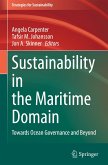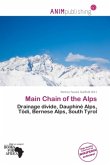A better understanding of past climate variations is the key for improved predictions of future climate. Considering the last millennium, tree-ring data are major proxies in climate reconstructions. They provide annually resolved information often combined with considerable temporal length and have moreover a wide geographical distribution. A site with very old trees is found in the French Maritime Alps. At its Mediterranean margin, these larches are able to reach an age of up to 1000 years probably belonging to the oldest larches of Europe. They are situated in a region very vulnerable to climate change since extended heat waves and changed precipitation pattern seem to be already established in the Mediterranean. Therefore, this area is of special climatological interest. Based on tree-ring width chronologies from high-elevation sites in this region, the author Thomas Neuenschwander analyzes growth trends and climate sensitivity of larch (Larix decidua Mill.) and assesses theirpotential for long-term climate reconstructions for the Mediterranean. In addition to climate factors, other environmental factors affecting tree growth are discussed, e.g. larch budmoth outbreaks.




![Discoveries of the English, French and Dutch in America [microform] Discoveries of the English, French and Dutch in America [microform]](https://bilder.buecher.de/produkte/66/66184/66184909m.jpg)

![Voyages, Maritime Adventures and Commercialenterprises in All Parts of the World [microform]: Comprising a Period of Twenty-four Years, in Every Kind Voyages, Maritime Adventures and Commercialenterprises in All Parts of the World [microform]: Comprising a Period of Twenty-four Years, in Every Kind](https://bilder.buecher.de/produkte/65/65494/65494642m.jpg)

